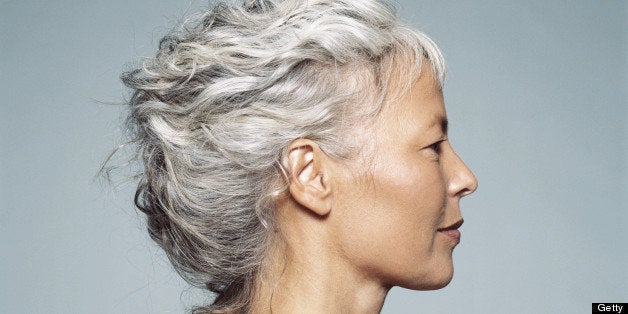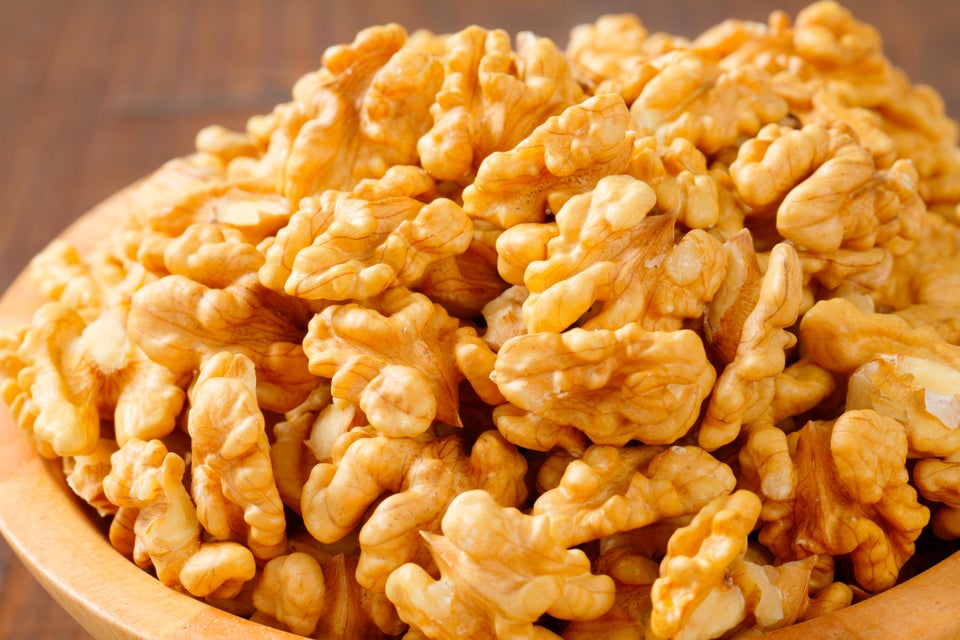
More hair in your comb? Hair texture that could spark a brush fire? These are just some of the signs of aging hair, a reality many post 50 men and women are sad to report they're experiencing. When asked how their hair has changed with age, Huff/Post50 Facebook fans had a lot to say.
"Hair? What hair?" wrote Lee Coleman.
"It's thinner and sprinkled with gray, which makes it look blonder, so I don't mind that," wrote Irene Sieders. "I do mind the thinner hair and the scalp showing through."
But these changes can be treated -- it just involves changing your relationship with your hair, says Dr. Heather Woolery-Lloyd, a dermatologist in Miami Beach, Florida. "All of those things that you did when you were young and could get away with, older women simply can't."
Dermatologists shared the four most prominent signs of aging hair, and what solutions are out there to treat them. Tell us your thoughts -- and how you've dealt with the four issues below -- in the comments.
Going Gray
That first white strand is a tell-tale sign of aging hair. The average person notices their first gray hair in their 30s and most people by their 40s, said Dr. Jeffrey Benabio, dermatologist and physician director of healthcare transformations at Kaiser Permanente in San Diego.
"Hair goes gray when cells stop producing pigment, which happens naturally with age," Benabio said. "By age 50, 50 percent of people have gray hair."
L'Oreal recently announced they'll be unveiling a gray hair cure pill in 2015 to protect your hair pigment; however, the pill is said to be a supplement to prevent hair from turning gray, and not a way to reverse graying hair, L'Oreal's head of hair technology Bruno Bernard said in a statement. But there's nothing wrong with going gray. In fact, some of our favorite people -- both celebrities and every day people -- embrace their silver strands.
Thinness
"It’s perfectly normal to lose about 100 hairs per day, no matter your age," Benabio said. "For both men and women, it’s normal (albeit unpleasant) to get thinning hair as you age. For women, hormonal changes can affect hair growth patterns as well. It’s not uncommon for menopausal women to experience hair thinning and hair loss simultaneously. For example, they may notice less hair on their legs but more hair on their upper lip or chin."
Another physical change is behind hair thinning, explained Woolery-Lloyd.
"The hair follicles get smaller and smaller so that they produce a hair that you can't see," she said. "[They are the] finest hairs that exist, and that's why [men can] look bald. That can also happen in women and that's what we call female pattern balding. All men to some extent have a change in their hairline -- not the hairline when they were 16."
If you're dealing with thinning hair, Woolery-Lloyd suggests using myoxin. "It doesn't grow hair, but it helps strengthen existing hair and makes it look fuller," she said. "Also minimizing breakage so the hair that you do have stays. When hair breaks faster than a rate it grows, then you don't have any length and that leads to thinning. Anything that can help strengthen your hair."
Dryness
"Our oil glands shrink over time and they don't produce oil efficiently," Woolery-Lloyd said. When you're younger, "oil travels down the hair follicle and naturally coats the hair. If you're old, you're not producing as much oil" leaving your hair much drier than you remember from your teen days.
The best remedy for this is to put oil in your hair, Woolery-Lloyd advised. It may be different for those who remember having to wash their hair every day to avoid lank, oily hair, but it's the best way to return moisture to your hair. Argan oil is incredibly hydrating and can be found in a number of hair products.
"[Also] avoid high heat and aggressive hairstyling techniques that strip the hair of natural oil," she said.
Brittleness
"It’s true that as you age, your hair also loses some of its elasticity causing it to become brittle," Benabio said. "Yet, often, dry, brittle hair is less related to aging and more related to the products you use. Hair that is repeatedly treated with chemicals -- bleaches, hair straighteners, permanent dyes -- can become stiff, dry and prone to breakage."
Give your strands some TLC by ditching these harsh chemicals and using protein-rich hair treatments instead.
Another way to treat brittleness is to take a hair vitamin with biotin and silica to help strengthen your hair, said Woolery-Lloyd.
"Those with biotin defiicencies have dry, brittle hair and when you supplement them with biotin, their hair returns to normal. Take at last 3,000 mg/day. Silica helps to strengthen collagen -- research is weaker on this but it helps strengthen your existing hair. Hair grows 1 centimeter a month; it takes six months to see the result of hair vitamins," Woolery-Lloyd said.

